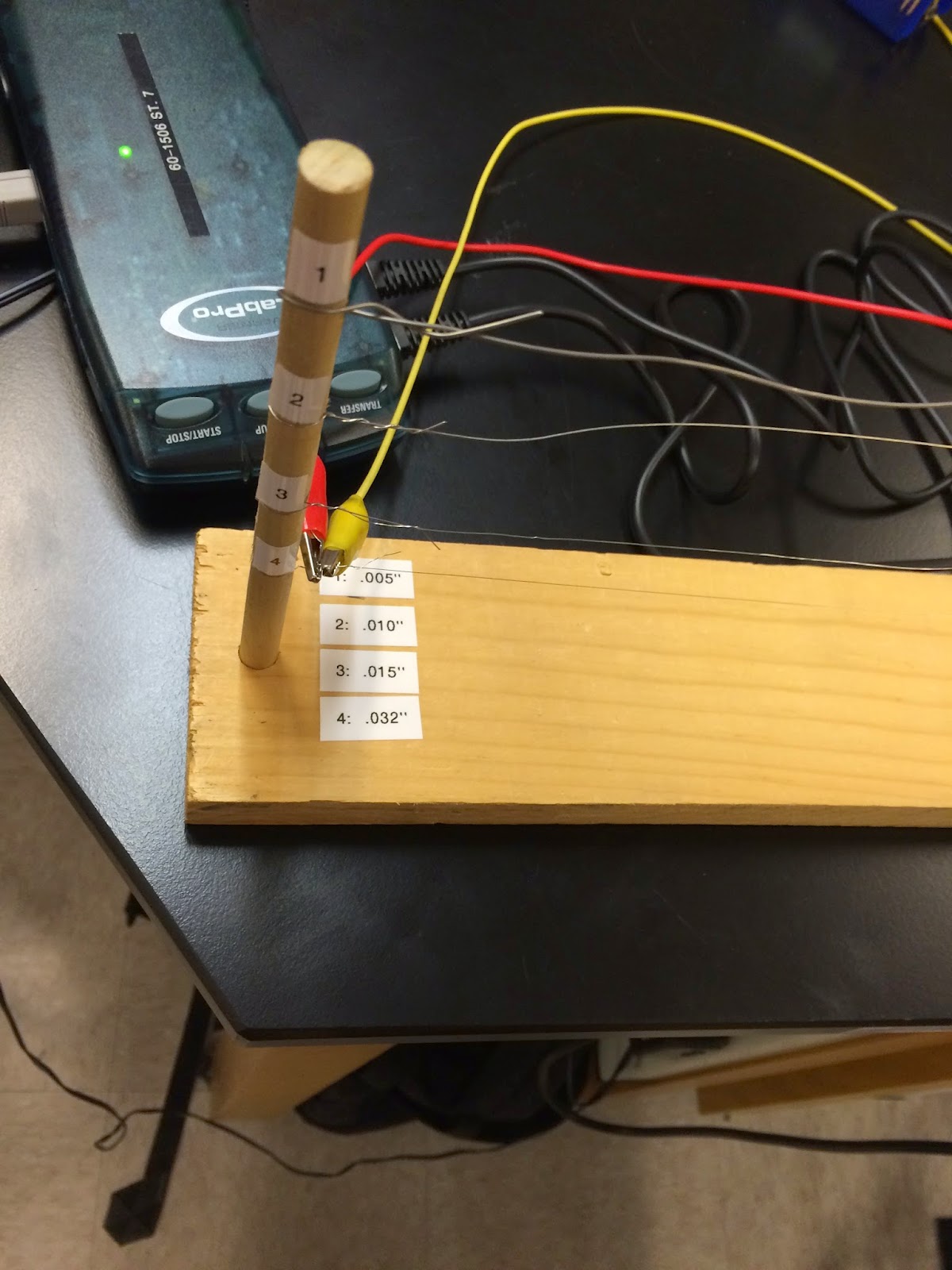Gauss’s Law
An electric field was drawn around two positive charges and
one negative charge. After making three
different surfaces the net flux was found by subtracting the amount of lines
entering the surface by the amount of lines leaving the space. It can be seen that the net flux is proportional
to the charge enclosed within the surface.
Microwave Demos
What happens when you put different objects in the
microwave?
Fork
-Nothing! The particles on the fork are much too big for the
microwaves to have an effect on it and it also has a larger thermal mass
meaning it takes longer for it to heat.
CD
The surface bubbled and this is because the particles on the
CD are much smaller than the ones on the fork so the microwaves had a drastic
effect on the CD
Lit Match
A plasma ball forms! (see whiteboard for explanation)
Christmas Tree Ornament
It was found that depending on the orientation of the
ornament in the microwave the ornament would either spark or nothing would
happen (see whiteboard for explanation)
Steel Wool
A large cloud of sparks formed (see whiteboard for
explanation)
Soap
Expands like a soap soufflé (see whiteboard for explanation)
Light Bulb
Sparked colors and then went up in flames (see whiteboard
for explanation)
Capri Sun Container
Expanded and sparked (see whiteboard for explanation)
Grape
Nothing happens to a whole grape but a grape cut in half
will spark and catch fire
Gauss’s Law ActivPhysics
Answers to ActivPhysics on Whiteboard





 We looked at the relationship between the applied voltage
across a resistor (an old toaster wire) and the current through the
resistor. As the voltage across the
resistor increased, the current through the resistor also increased. Based on the graph, it can be seen that they
have a linear relationship which means that they are directly proportional to
one another. The equation of our line is
y = 7.256 X where y is the voltage and x is the current. Which gives us the relationship between
voltage and current as V = constant * I
We looked at the relationship between the applied voltage
across a resistor (an old toaster wire) and the current through the
resistor. As the voltage across the
resistor increased, the current through the resistor also increased. Based on the graph, it can be seen that they
have a linear relationship which means that they are directly proportional to
one another. The equation of our line is
y = 7.256 X where y is the voltage and x is the current. Which gives us the relationship between
voltage and current as V = constant * I 
 Next, we took a type of fence that had four different wires
connected across it each with a different thickness. As the wires were moved from the thinnest
wire to the thickest wire, the slope of the line decreased respectively. Also, when the length of the wires were
decreased, the slope of the line decreased as well. It can be seen that the slope of the line
found in these graphs and also the previous graph with the toaster wire is the
resistance. After studying these graphs,
it can be seen that the ticker the wire, the smaller the resistance, also the
shorter the wire the smaller the resistance.
Next, we took a type of fence that had four different wires
connected across it each with a different thickness. As the wires were moved from the thinnest
wire to the thickest wire, the slope of the line decreased respectively. Also, when the length of the wires were
decreased, the slope of the line decreased as well. It can be seen that the slope of the line
found in these graphs and also the previous graph with the toaster wire is the
resistance. After studying these graphs,
it can be seen that the ticker the wire, the smaller the resistance, also the
shorter the wire the smaller the resistance. 











